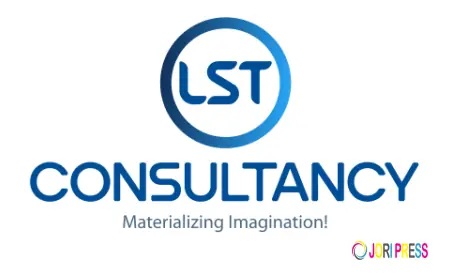Lactic Acid Market Outlook: Growth, Trends & Forecast 2030
Lactic Acid Market Outlook: Growth, Trends & Forecast 2030
Global Lactic Acid Market Analysis
According to the TechSci Research report, “Lactic Acid Market – Global Industry Size, Share, Trends, Competition Forecast & Opportunities, 2030F,” the global market stood at USD 3.40 billion in 2024 and is projected to expand at a CAGR of 7.68% through 2030. Growing environmental awareness, adoption of bio-based alternatives, and technological innovations in fermentation have positioned lactic acid as a vital chemical in the global bioeconomy.
Industry Overview
The Lactic Acid Market has experienced significant expansion over the last decade, supported by technological innovations, regulatory changes, and consumer-driven sustainability trends. Unlike conventional petrochemical-derived materials, lactic acid offers a renewable, biodegradable, and eco-friendly alternative, making it increasingly relevant in modern industries.
The introduction of advanced fermentation and enzymatic techniques has revolutionized lactic acid production. These methods have not only improved process efficiency and product quality but also reduced operational costs. The resulting high-purity lactic acid is now suitable for diverse applications, ranging from industrial use to medical and pharmaceutical sectors.
Furthermore, the transition toward renewable raw materials—such as corn, sugarcane, cassava, and other biomass sources—has strengthened the industry’s sustainability credentials. Manufacturers in North America, Europe, and Asia-Pacific are leveraging abundant agricultural resources to support large-scale production. This ensures supply chain stability while aligning with global initiatives to reduce carbon footprints.
Despite its advantages, the market faces challenges from petrochemical alternatives, which are still cost-competitive in some applications. Additionally, the fragmented structure of the lactic acid industry, dominated by regional small and medium producers, creates inconsistency in product quality and pricing pressures.
Market Growth Drivers
Several interconnected factors are driving growth in the Lactic Acid Market.
1. Technological Advancements in Production
Ongoing innovations in fermentation technology have significantly increased production efficiency. Modern enzymatic processes reduce waste, improve yields, and lower costs, making lactic acid more accessible for diverse industries.
2. Surge in Polylactic Acid (PLA) Demand
Polylactic Acid (PLA), derived from lactic acid, has gained popularity as a sustainable polymer. PLA’s biodegradable properties make it an ideal substitute for petroleum-based plastics, especially as governments worldwide restrict single-use plastic usage.
3. Growing Environmental Awareness
Global consumer preferences are shifting toward eco-friendly products. Lactic acid aligns perfectly with this trend, offering biodegradable solutions in packaging, personal care, and industrial manufacturing.
4. Expanding Role in Healthcare
The healthcare sector has embraced lactic acid derivatives for applications such as implants, sutures, and controlled drug release systems. Its biocompatibility ensures safety, while its biodegradability supports advanced medical innovation.
Key Market Challenges
Although the market outlook is optimistic, the Lactic Acid Market faces notable challenges.
-
Cost Competitiveness of Petrochemicals: Synthetic alternatives often remain cheaper, creating barriers for lactic acid adoption in cost-sensitive industries like packaging.
-
Supply Chain Fragmentation: A large number of regional players leads to inconsistent product quality and weak global standardization.
-
Feedstock Dependency: Price fluctuations in agricultural commodities such as corn and sugarcane directly impact lactic acid production costs.
-
Limited Awareness in Emerging Markets: Despite global adoption, some regions remain less aware of the environmental and industrial benefits of lactic acid.
Segmental Analysis: Ingredient Insights
The Lactic Acid Market can be segmented by application and raw material, providing insights into demand dynamics.
By Application
-
Polylactic Acid (PLA):
The PLA segment dominated in 2024 due to rising adoption in packaging, consumer goods, and healthcare. Its biodegradability and low carbon footprint make it an attractive substitute for petroleum-based plastics.
-
Medical and Healthcare:
PLA and lactic acid derivatives are widely used in sutures, tissue engineering, implants, and drug delivery systems. Rapid advancements in biomedicine continue to drive demand.
-
Food & Beverages:
Lactic acid plays a critical role in food preservation, flavor enhancement, and fermentation. Growing demand for packaged food and beverages is fueling consumption in this segment.
-
Personal Care:
The personal care industry utilizes lactic acid in formulations for skincare and haircare, leveraging its mild exfoliating and hydrating properties. Rising consumer focus on natural ingredients is amplifying demand.
By Raw Material
-
Corn:
Corn remains one of the most widely used feedstocks due to its availability and high sugar content, which ensures efficient fermentation.
-
Sugarcane and Cassava:
Sugar-rich crops such as sugarcane and cassava provide cost-effective alternatives, particularly in Asia-Pacific markets.
-
Yeast Extract and Other Biomass:
Innovative use of yeast extracts and agricultural residues offers sustainable raw material options, reducing dependency on conventional crops.
Regional Market Insights
North America
North America remains a stronghold for lactic acid, supported by mature industrial infrastructure, regulatory policies favoring sustainable solutions, and strong demand from packaging and food industries.
Europe
Europe leads in sustainability initiatives, making it a pioneer in the adoption of PLA. Stringent EU regulations against single-use plastics continue to drive lactic acid demand, especially in packaging and healthcare.
Asia-Pacific
Asia-Pacific is projected to record the fastest growth. Countries such as China, India, and Thailand benefit from abundant agricultural raw materials and rising demand for eco-friendly packaging. Favorable government policies promoting green manufacturing have further boosted market expansion.
Rest of the World
Emerging economies in Latin America and the Middle East are gradually incorporating lactic acid in food preservation and packaging, although adoption is slower compared to developed regions.
Competitive Landscape
The Lactic Acid Market is highly competitive, with global and regional players competing for market share. Leading players are investing in production expansion, sustainability-focused R&D, and strategic collaborations.
Key companies include:
-
BASF SE
-
GALACTIC
-
FUTERRO S.A.
-
Corbion NV
-
The Dow Chemical Company
-
TEIJIN MEDICAL TECHNOLOGIES CO., LTD
-
NatureWorks LLC
-
Danimer Scientific
-
Henan Jindan Lactic Acid Technology Co., Ltd.
-
thyssenkrupp AG
These players are increasingly focused on downstream PLA applications to tap into packaging, automotive, and healthcare demand.
Future Outlook
The Lactic Acid Market is expected to continue its upward trajectory, driven by sustainability imperatives and expanding industrial applications. Over the next five years, PLA-based solutions will witness rapid adoption across packaging and healthcare, supported by regulations and growing consumer awareness.
-
2025–2026: Increasing investments in large-scale lactic acid facilities across Asia-Pacific, supported by government subsidies for green manufacturing.
-
2027–2028: Stronger regulatory push in Europe and North America against petrochemical plastics, accelerating PLA usage in e-commerce and food packaging.
-
2029–2030: Technological breakthroughs in fermentation and enzymatic processes are expected to lower production costs, making lactic acid more competitive with petrochemical alternatives.
By 2030, lactic acid is expected to be a mainstream material across packaging, personal care, food processing, and pharmaceuticals. However, long-term growth will depend on overcoming feedstock price volatility and improving global production standardization.
Conclusion
The Lactic Acid Market is emerging as a cornerstone of the global transition toward sustainable, bio-based materials. With applications spanning packaging, food and beverages, personal care, and pharmaceuticals, lactic acid has firmly positioned itself as an indispensable chemical in the green economy.
While challenges such as cost competitiveness and supply chain fragmentation persist, technological advancements, regulatory support, and shifting consumer preferences provide a strong foundation for continued growth. For both established players and new entrants, the market presents lucrative opportunities to innovate, expand, and capitalize on the rising global demand for eco-friendly solutions.
Contact
TechSci Research LLC
420 Lexington Avenue, Suite 300,
New York, United States- 10170
Tel: +1-332-258-6602
Email: [email protected]
Website: www.techsciresearch.com
FAQs
Q1: What is the size of the Lactic Acid Market in 2024?
The global market stood at USD 3.40 billion in 2024.
Q2: Which industry is driving the highest demand for lactic acid?
The packaging industry, particularly through the adoption of PLA, is the leading demand driver.
Q3: Why is the Asia-Pacific region expected to grow the fastest?
Asia-Pacific benefits from abundant agricultural feedstocks, expanding industrial infrastructure, and strong government support for sustainable manufacturing.
Q4: What are the biggest challenges for the Lactic Acid Market?
Challenges include competition from cheaper petrochemical alternatives, inconsistent product quality due to market fragmentation, and raw material price fluctuations.
Q5: Who are the leading players in the global Lactic Acid Market?
Key companies include BASF SE, Corbion NV, NatureWorks LLC, Danimer Scientific, and thyssenkrupp AG.
Q6: What is the forecast for the Lactic Acid Market by 2030?
The market is projected to expand at a CAGR of 7.68%, reaching significant value by 2030, driven by PLA adoption and healthcare innovations.
What's Your Reaction?
 Like
0
Like
0
 Dislike
0
Dislike
0
 Love
0
Love
0
 Funny
0
Funny
0
 Angry
0
Angry
0
 Sad
0
Sad
0
 Wow
0
Wow
0
















































